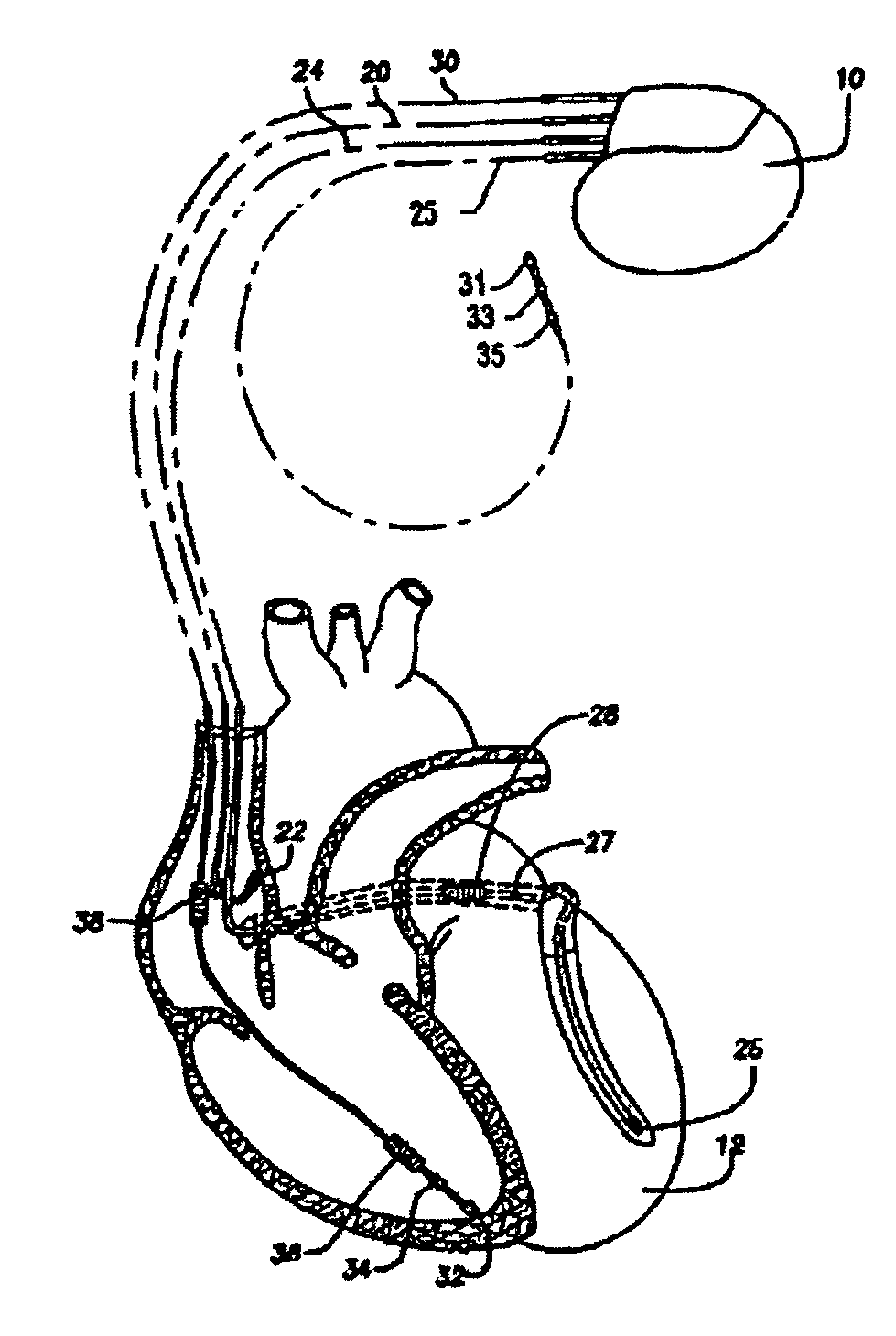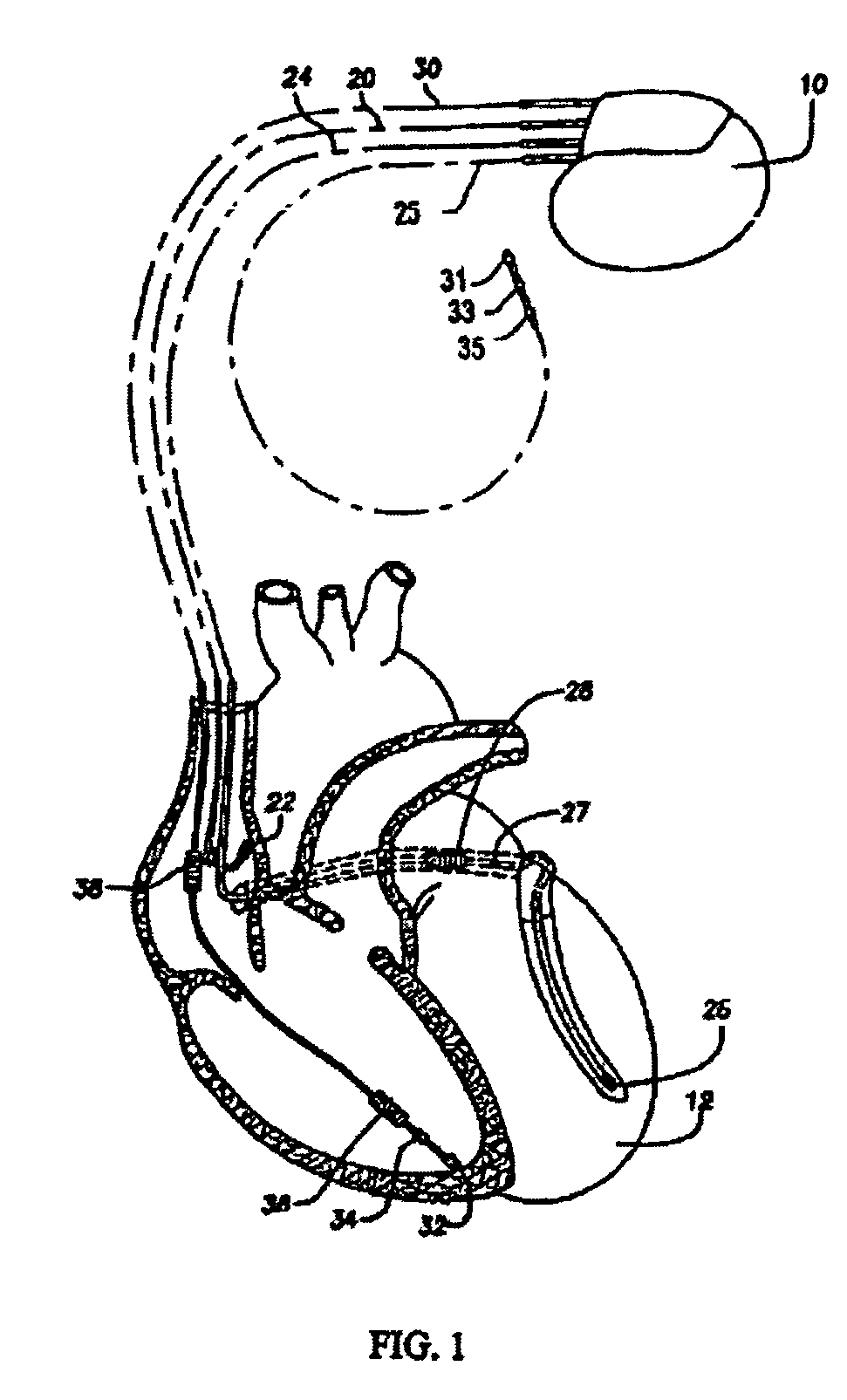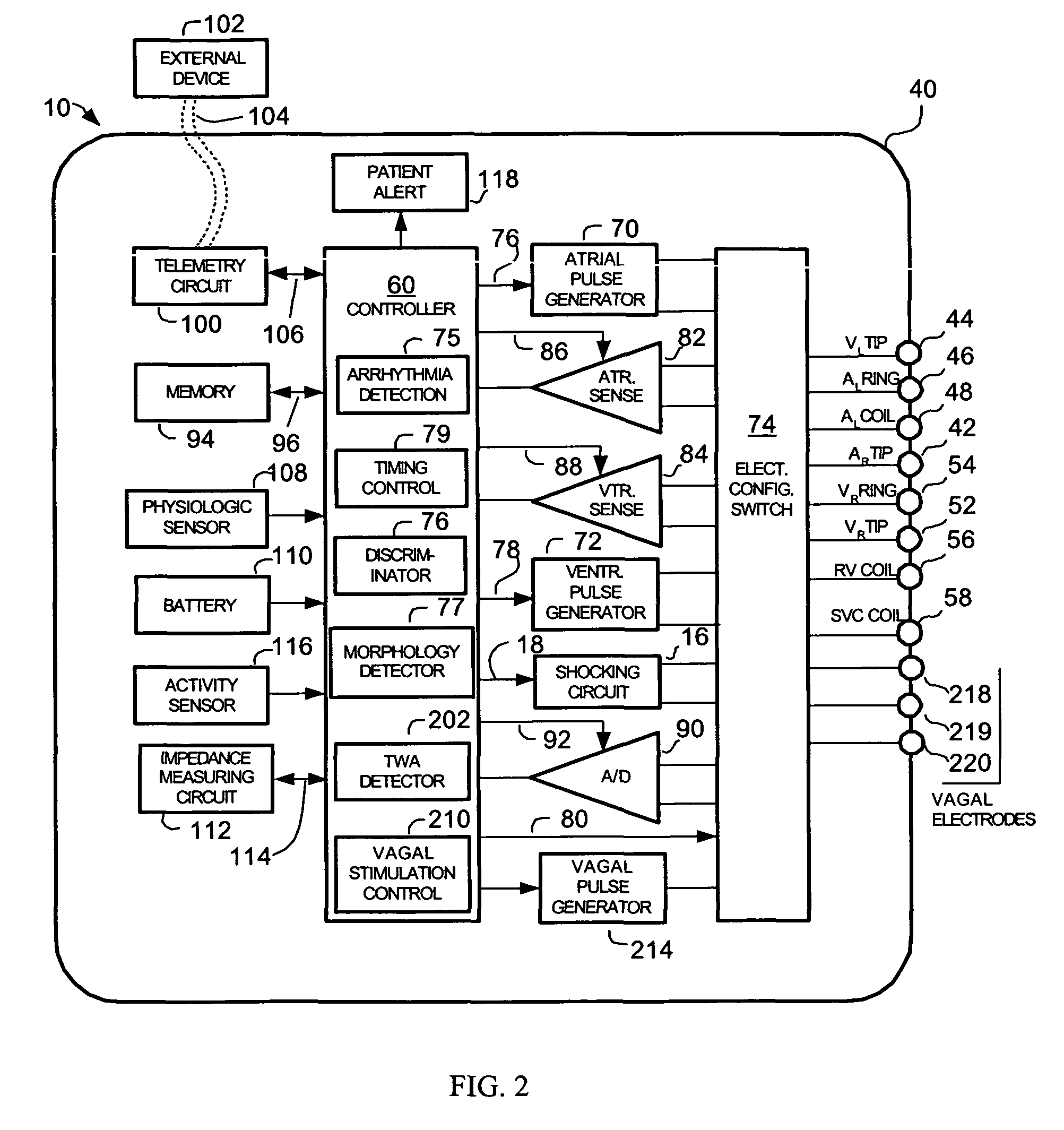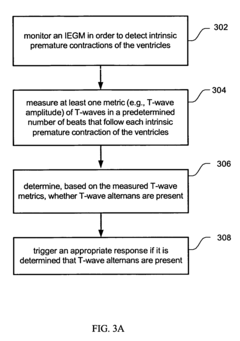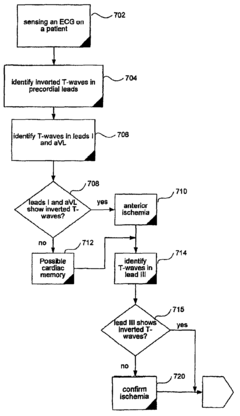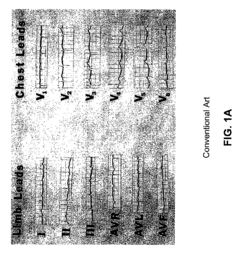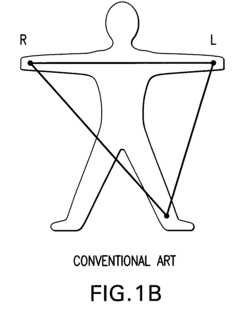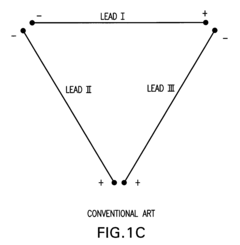Decoding silent T wave inversion signals in longitudinal cardiology analytics
AUG 19, 20259 MIN READ
Generate Your Research Report Instantly with AI Agent
Patsnap Eureka helps you evaluate technical feasibility & market potential.
T Wave Inversion Background
T wave inversion is a significant electrocardiographic finding that has been the subject of extensive research in cardiology. This phenomenon occurs when the T wave, which represents ventricular repolarization, appears inverted or negative in certain leads of an electrocardiogram (ECG). Historically, T wave inversion has been associated with various cardiac conditions, including myocardial ischemia, cardiomyopathies, and electrolyte imbalances.
The concept of "silent" T wave inversion refers to the presence of this ECG abnormality in the absence of overt clinical symptoms or other ECG changes. This subtle finding has gained increasing attention in recent years due to its potential prognostic significance in both symptomatic and asymptomatic individuals. Longitudinal cardiology analytics have played a crucial role in elucidating the long-term implications of silent T wave inversion.
The evolution of ECG technology and data analytics has significantly enhanced our ability to detect and interpret T wave inversions. Advanced algorithms and machine learning techniques have been developed to identify subtle changes in T wave morphology that may not be apparent to the human eye. These technological advancements have opened new avenues for research and clinical applications in the field of cardiology.
Recent studies have focused on the prevalence and prognostic value of silent T wave inversion in various populations. Longitudinal cohort studies have demonstrated that individuals with persistent T wave inversion, even in the absence of symptoms, may be at increased risk for future cardiovascular events. This has led to a growing interest in incorporating T wave inversion analysis into risk stratification models for primary and secondary prevention of cardiovascular disease.
The mechanisms underlying T wave inversion are complex and multifactorial. While acute myocardial ischemia remains a well-established cause, other factors such as structural heart disease, genetic predisposition, and autonomic nervous system dysfunction have been implicated. Understanding these mechanisms is crucial for developing targeted therapeutic interventions and improving patient outcomes.
Decoding silent T wave inversion signals in longitudinal cardiology analytics presents several challenges. These include the need for standardized definitions and measurement techniques, the integration of ECG data with other clinical and imaging parameters, and the development of robust predictive models that can account for the dynamic nature of T wave changes over time. Addressing these challenges requires a multidisciplinary approach, combining expertise in cardiology, electrophysiology, biostatistics, and data science.
The concept of "silent" T wave inversion refers to the presence of this ECG abnormality in the absence of overt clinical symptoms or other ECG changes. This subtle finding has gained increasing attention in recent years due to its potential prognostic significance in both symptomatic and asymptomatic individuals. Longitudinal cardiology analytics have played a crucial role in elucidating the long-term implications of silent T wave inversion.
The evolution of ECG technology and data analytics has significantly enhanced our ability to detect and interpret T wave inversions. Advanced algorithms and machine learning techniques have been developed to identify subtle changes in T wave morphology that may not be apparent to the human eye. These technological advancements have opened new avenues for research and clinical applications in the field of cardiology.
Recent studies have focused on the prevalence and prognostic value of silent T wave inversion in various populations. Longitudinal cohort studies have demonstrated that individuals with persistent T wave inversion, even in the absence of symptoms, may be at increased risk for future cardiovascular events. This has led to a growing interest in incorporating T wave inversion analysis into risk stratification models for primary and secondary prevention of cardiovascular disease.
The mechanisms underlying T wave inversion are complex and multifactorial. While acute myocardial ischemia remains a well-established cause, other factors such as structural heart disease, genetic predisposition, and autonomic nervous system dysfunction have been implicated. Understanding these mechanisms is crucial for developing targeted therapeutic interventions and improving patient outcomes.
Decoding silent T wave inversion signals in longitudinal cardiology analytics presents several challenges. These include the need for standardized definitions and measurement techniques, the integration of ECG data with other clinical and imaging parameters, and the development of robust predictive models that can account for the dynamic nature of T wave changes over time. Addressing these challenges requires a multidisciplinary approach, combining expertise in cardiology, electrophysiology, biostatistics, and data science.
Cardiology Analytics Market
The cardiology analytics market has experienced significant growth in recent years, driven by the increasing prevalence of cardiovascular diseases and the growing adoption of digital health technologies. This market encompasses a wide range of solutions, including software platforms, wearable devices, and artificial intelligence-driven analytics tools designed to improve the diagnosis, monitoring, and management of heart conditions.
The global cardiology analytics market is characterized by a strong demand for advanced diagnostic and monitoring solutions. Healthcare providers are increasingly turning to data-driven approaches to enhance patient care and optimize treatment outcomes. This trend is particularly evident in the field of longitudinal cardiology analytics, where the ability to analyze long-term patient data is crucial for identifying subtle changes in cardiac health and predicting potential complications.
One of the key drivers of market growth is the rising incidence of cardiovascular diseases worldwide. According to the World Health Organization, cardiovascular diseases remain the leading cause of death globally, accounting for an estimated 31% of all deaths. This has created a pressing need for more sophisticated analytical tools to support early detection and intervention strategies.
The market is also benefiting from technological advancements in data analytics and artificial intelligence. Machine learning algorithms are being developed to analyze complex cardiac data, including electrocardiogram (ECG) signals, to detect subtle abnormalities that may be missed by traditional diagnostic methods. This includes the detection of silent T wave inversion signals, which can be indicative of underlying cardiac issues even in the absence of overt symptoms.
Telemedicine and remote patient monitoring solutions have gained significant traction in the cardiology analytics market, especially in the wake of the COVID-19 pandemic. These technologies enable healthcare providers to monitor patients' cardiac health remotely, reducing the need for in-person visits and improving access to care for patients in remote or underserved areas.
The market is highly competitive, with both established medical technology companies and innovative startups vying for market share. Key players are focusing on developing integrated platforms that combine hardware devices, software analytics, and cloud-based data management to provide comprehensive cardiac care solutions. Partnerships between technology companies and healthcare providers are becoming increasingly common, driving innovation and accelerating the adoption of advanced analytics tools in clinical practice.
Looking ahead, the cardiology analytics market is poised for continued growth, with a particular focus on personalized medicine and predictive analytics. The integration of genomic data with traditional cardiac metrics is expected to revolutionize risk assessment and treatment planning, enabling more targeted interventions and improved patient outcomes. As the field of cardiology analytics continues to evolve, the ability to decode and interpret complex signals, such as silent T wave inversions, will play a crucial role in advancing cardiovascular care and reducing the global burden of heart disease.
The global cardiology analytics market is characterized by a strong demand for advanced diagnostic and monitoring solutions. Healthcare providers are increasingly turning to data-driven approaches to enhance patient care and optimize treatment outcomes. This trend is particularly evident in the field of longitudinal cardiology analytics, where the ability to analyze long-term patient data is crucial for identifying subtle changes in cardiac health and predicting potential complications.
One of the key drivers of market growth is the rising incidence of cardiovascular diseases worldwide. According to the World Health Organization, cardiovascular diseases remain the leading cause of death globally, accounting for an estimated 31% of all deaths. This has created a pressing need for more sophisticated analytical tools to support early detection and intervention strategies.
The market is also benefiting from technological advancements in data analytics and artificial intelligence. Machine learning algorithms are being developed to analyze complex cardiac data, including electrocardiogram (ECG) signals, to detect subtle abnormalities that may be missed by traditional diagnostic methods. This includes the detection of silent T wave inversion signals, which can be indicative of underlying cardiac issues even in the absence of overt symptoms.
Telemedicine and remote patient monitoring solutions have gained significant traction in the cardiology analytics market, especially in the wake of the COVID-19 pandemic. These technologies enable healthcare providers to monitor patients' cardiac health remotely, reducing the need for in-person visits and improving access to care for patients in remote or underserved areas.
The market is highly competitive, with both established medical technology companies and innovative startups vying for market share. Key players are focusing on developing integrated platforms that combine hardware devices, software analytics, and cloud-based data management to provide comprehensive cardiac care solutions. Partnerships between technology companies and healthcare providers are becoming increasingly common, driving innovation and accelerating the adoption of advanced analytics tools in clinical practice.
Looking ahead, the cardiology analytics market is poised for continued growth, with a particular focus on personalized medicine and predictive analytics. The integration of genomic data with traditional cardiac metrics is expected to revolutionize risk assessment and treatment planning, enabling more targeted interventions and improved patient outcomes. As the field of cardiology analytics continues to evolve, the ability to decode and interpret complex signals, such as silent T wave inversions, will play a crucial role in advancing cardiovascular care and reducing the global burden of heart disease.
Silent T Wave Challenges
Silent T wave inversion presents a significant challenge in longitudinal cardiology analytics due to its subtle nature and potential clinical implications. This phenomenon, characterized by an inverted T wave on an electrocardiogram (ECG) without accompanying symptoms or obvious cardiac abnormalities, poses difficulties in detection, interpretation, and risk stratification.
One of the primary challenges lies in the accurate identification of silent T wave inversions amidst the vast amount of ECG data collected over extended periods. Traditional ECG analysis methods may overlook these subtle changes, leading to missed opportunities for early intervention. The development of advanced algorithms capable of detecting minute alterations in T wave morphology is crucial for improving diagnostic accuracy.
Interpreting the clinical significance of silent T wave inversions poses another substantial challenge. While T wave inversions can be indicative of underlying cardiac pathologies, such as ischemia or cardiomyopathy, silent inversions may not always correlate with adverse outcomes. Distinguishing between benign variations and potentially pathological changes requires sophisticated analysis techniques that consider multiple factors, including patient history, demographics, and other ECG parameters.
The temporal variability of silent T wave inversions further complicates their analysis in longitudinal studies. These inversions may appear transiently or persist over time, necessitating the development of robust tracking mechanisms to monitor their evolution. Establishing reliable criteria for determining the clinical relevance of persistent versus transient inversions remains a significant challenge in the field.
Moreover, the integration of silent T wave inversion data with other cardiovascular risk factors and biomarkers presents a complex task. Creating comprehensive risk models that incorporate these subtle ECG changes alongside traditional risk factors requires advanced statistical and machine learning approaches. The challenge lies in developing models that can accurately weigh the prognostic value of silent T wave inversions in the context of overall cardiovascular health.
Standardization of analysis methods and reporting criteria for silent T wave inversions across different healthcare systems and research institutions is another hurdle. The lack of uniform guidelines for identifying and classifying these inversions hampers the comparison of research findings and the development of universally applicable clinical protocols.
Addressing these challenges requires a multidisciplinary approach, combining expertise in cardiology, data science, and biomedical engineering. Advances in artificial intelligence and machine learning offer promising avenues for enhancing the detection and interpretation of silent T wave inversions. However, validating these novel approaches in large-scale, diverse patient populations remains a critical step in their clinical implementation.
One of the primary challenges lies in the accurate identification of silent T wave inversions amidst the vast amount of ECG data collected over extended periods. Traditional ECG analysis methods may overlook these subtle changes, leading to missed opportunities for early intervention. The development of advanced algorithms capable of detecting minute alterations in T wave morphology is crucial for improving diagnostic accuracy.
Interpreting the clinical significance of silent T wave inversions poses another substantial challenge. While T wave inversions can be indicative of underlying cardiac pathologies, such as ischemia or cardiomyopathy, silent inversions may not always correlate with adverse outcomes. Distinguishing between benign variations and potentially pathological changes requires sophisticated analysis techniques that consider multiple factors, including patient history, demographics, and other ECG parameters.
The temporal variability of silent T wave inversions further complicates their analysis in longitudinal studies. These inversions may appear transiently or persist over time, necessitating the development of robust tracking mechanisms to monitor their evolution. Establishing reliable criteria for determining the clinical relevance of persistent versus transient inversions remains a significant challenge in the field.
Moreover, the integration of silent T wave inversion data with other cardiovascular risk factors and biomarkers presents a complex task. Creating comprehensive risk models that incorporate these subtle ECG changes alongside traditional risk factors requires advanced statistical and machine learning approaches. The challenge lies in developing models that can accurately weigh the prognostic value of silent T wave inversions in the context of overall cardiovascular health.
Standardization of analysis methods and reporting criteria for silent T wave inversions across different healthcare systems and research institutions is another hurdle. The lack of uniform guidelines for identifying and classifying these inversions hampers the comparison of research findings and the development of universally applicable clinical protocols.
Addressing these challenges requires a multidisciplinary approach, combining expertise in cardiology, data science, and biomedical engineering. Advances in artificial intelligence and machine learning offer promising avenues for enhancing the detection and interpretation of silent T wave inversions. However, validating these novel approaches in large-scale, diverse patient populations remains a critical step in their clinical implementation.
Current T Wave Detection Methods
01 Detection and analysis of T wave inversion
T wave inversion is a significant indicator in electrocardiogram (ECG) analysis. Advanced algorithms and signal processing techniques are employed to accurately detect and analyze T wave inversions, which can be indicative of various cardiac conditions. These methods often involve complex mathematical models and machine learning approaches to distinguish between normal and abnormal T wave morphologies.- Detection and analysis of T wave inversion: T wave inversion is a significant indicator in electrocardiogram (ECG) analysis. Advanced algorithms and signal processing techniques are employed to accurately detect and analyze T wave inversions, which can be indicative of various cardiac conditions. These methods often involve complex mathematical models and machine learning approaches to distinguish normal T waves from inverted ones.
- Imaging techniques for visualizing T wave inversion: Various imaging modalities and visualization techniques are utilized to enhance the detection and interpretation of T wave inversions. These may include advanced ECG display methods, 3D cardiac imaging, and specialized software for ECG signal representation. Such techniques aim to improve the accuracy of diagnosis and provide clearer visual cues for medical professionals.
- Wearable devices for continuous T wave monitoring: Wearable technology has been developed to enable continuous monitoring of T waves and other ECG parameters. These devices incorporate miniaturized sensors and wireless communication capabilities to track cardiac activity in real-time, allowing for early detection of T wave inversions and other abnormalities outside of clinical settings.
- AI and machine learning for T wave inversion prediction: Artificial intelligence and machine learning algorithms are being applied to predict and classify T wave inversions. These advanced computational methods analyze large datasets of ECG signals to identify patterns and risk factors associated with T wave inversions, potentially improving early diagnosis and risk stratification in cardiac care.
- Integration of T wave analysis in cardiac monitoring systems: Comprehensive cardiac monitoring systems now incorporate specialized modules for T wave inversion analysis. These integrated solutions combine various ECG parameters and biomarkers to provide a holistic view of cardiac health, enabling more accurate diagnosis and personalized treatment strategies for patients with T wave abnormalities.
02 Wearable devices for continuous T wave monitoring
Wearable technology has been developed to enable continuous monitoring of T waves. These devices incorporate miniaturized sensors and advanced signal processing capabilities to detect T wave inversions in real-time. They can alert users or healthcare providers to potential cardiac issues, allowing for timely intervention and improved patient outcomes.Expand Specific Solutions03 Imaging techniques for visualizing T wave inversions
Novel imaging technologies have been developed to visualize T wave inversions more effectively. These may include advanced ECG mapping techniques, 3D reconstruction of cardiac electrical activity, or integration with other imaging modalities such as echocardiography or MRI. These methods provide a more comprehensive view of cardiac function and can aid in the diagnosis of conditions associated with T wave inversion.Expand Specific Solutions04 AI and machine learning for T wave inversion prediction
Artificial intelligence and machine learning algorithms are being applied to predict T wave inversions before they occur. These systems analyze vast amounts of patient data, including historical ECGs, clinical information, and other relevant parameters to identify patterns that may precede T wave inversions. This predictive capability could enable preemptive interventions and personalized treatment strategies.Expand Specific Solutions05 Integration of T wave inversion analysis in cardiac monitoring systems
T wave inversion detection and analysis are being integrated into comprehensive cardiac monitoring systems. These systems combine multiple parameters and biomarkers to provide a holistic view of cardiac health. They may incorporate data from various sources, such as ECG, blood pressure, and other physiological measurements, to contextualize T wave inversions and improve diagnostic accuracy.Expand Specific Solutions
Key Cardiology AI Players
The decoding of silent T wave inversion signals in longitudinal cardiology analytics represents an emerging field at the intersection of cardiology and data science. This technology is in its early development stages, with the market still relatively small but showing significant growth potential. The technological maturity varies among key players, with established medical device companies like Medtronic and Philips leading in hardware development. Innovative startups such as Cardiologs and VUNO are pushing the boundaries in AI-driven ECG analysis. Academic institutions, including MIT and Duke University, contribute cutting-edge research. Chinese companies like Huawei and Contec Medical Systems are also making strides in this area, leveraging their expertise in digital health technologies.
Medtronic, Inc.
Technical Solution: Medtronic has developed advanced algorithms for decoding silent T wave inversion signals in longitudinal cardiology analytics. Their approach utilizes machine learning techniques to analyze ECG data over time, identifying subtle changes in T wave morphology that may indicate underlying cardiac issues. The system employs a combination of time-domain and frequency-domain analysis to extract features from the T wave, which are then fed into a neural network trained on large datasets of longitudinal ECG recordings[1]. This allows for early detection of potential cardiac abnormalities, even in asymptomatic patients. Medtronic's solution also incorporates adaptive thresholding techniques to account for patient-specific variations and reduce false positives[3].
Strengths: Extensive experience in cardiac monitoring devices, large proprietary datasets for algorithm training, and established market presence. Weaknesses: Potential for over-reliance on proprietary hardware, which may limit widespread adoption.
Koninklijke Philips NV
Technical Solution: Philips has developed a comprehensive approach to decoding silent T wave inversion signals using advanced signal processing and artificial intelligence. Their system employs a multi-stage analysis pipeline, starting with noise reduction and baseline wander correction to isolate clean T wave signals[2]. The core of their technology lies in a deep learning model that has been trained on a diverse set of longitudinal ECG data, enabling it to detect subtle changes in T wave morphology over time. Philips' solution also incorporates contextual information, such as patient history and demographic data, to improve the accuracy of its predictions[4]. The system is designed to integrate seamlessly with existing hospital information systems, facilitating easy adoption and implementation in clinical settings.
Strengths: Strong R&D capabilities, extensive healthcare IT infrastructure integration experience. Weaknesses: May face challenges in smaller healthcare settings with limited resources for advanced technology adoption.
T Wave Inversion Algorithms
Methods and systems for detecting the presence of T-wave alternans
PatentActiveUS7756571B1
Innovation
- An implantable cardiac device system and method that detects intrinsic or induced premature contractions of the ventricles, measuring T-wave metrics in a specified number of beats to determine the presence of T-wave alternans, allowing for continuous monitoring without the need for surface ECGs or extensive computational resources.
Differentiating ischemic from non-ischemic T-wave inversion
PatentInactiveUS7925336B2
Innovation
- A method and system that calculate the direction of the T-wave vector from electrocardiographic data to diagnose ischemia (vector between 75° and 200°) and cardiac memory (vector between 0° and -90°) to distinguish between the two conditions.
Regulatory Considerations
The regulatory landscape for decoding silent T wave inversion signals in longitudinal cardiology analytics is complex and evolving. Healthcare regulatory bodies, such as the FDA in the United States and the EMA in Europe, have established stringent guidelines for the development and implementation of medical devices and software used in cardiology diagnostics. These regulations aim to ensure patient safety, data privacy, and the efficacy of diagnostic tools.
For silent T wave inversion signal decoding technologies, regulatory considerations primarily focus on the accuracy and reliability of the algorithms used. Regulatory bodies require extensive clinical validation studies to demonstrate the sensitivity and specificity of these diagnostic tools. The studies must show that the technology can accurately detect and interpret silent T wave inversions across diverse patient populations and clinical scenarios.
Data privacy and security regulations, such as HIPAA in the United States and GDPR in Europe, play a crucial role in the development and deployment of longitudinal cardiology analytics systems. These regulations mandate strict protocols for data collection, storage, transmission, and access. Developers must implement robust encryption methods, secure data storage systems, and comprehensive audit trails to comply with these regulations.
Interoperability standards are another key regulatory consideration. Regulatory bodies encourage the adoption of standardized data formats and communication protocols to ensure seamless integration with existing healthcare information systems. Compliance with standards such as HL7 FHIR and DICOM is often necessary for regulatory approval.
The regulatory approval process for these technologies typically involves submitting a premarket notification (510(k)) or premarket approval (PMA) application to the FDA, depending on the device classification. In Europe, manufacturers must obtain CE marking by demonstrating compliance with the Medical Device Regulation (MDR). The approval process includes thorough documentation of the technology's design, development, testing, and risk management processes.
Post-market surveillance is an ongoing regulatory requirement for technologies used in longitudinal cardiology analytics. Manufacturers must implement systems to monitor the performance of their devices in real-world settings, report adverse events, and conduct periodic safety reviews. This ensures that the technology continues to meet regulatory standards and maintains its effectiveness in clinical practice.
For silent T wave inversion signal decoding technologies, regulatory considerations primarily focus on the accuracy and reliability of the algorithms used. Regulatory bodies require extensive clinical validation studies to demonstrate the sensitivity and specificity of these diagnostic tools. The studies must show that the technology can accurately detect and interpret silent T wave inversions across diverse patient populations and clinical scenarios.
Data privacy and security regulations, such as HIPAA in the United States and GDPR in Europe, play a crucial role in the development and deployment of longitudinal cardiology analytics systems. These regulations mandate strict protocols for data collection, storage, transmission, and access. Developers must implement robust encryption methods, secure data storage systems, and comprehensive audit trails to comply with these regulations.
Interoperability standards are another key regulatory consideration. Regulatory bodies encourage the adoption of standardized data formats and communication protocols to ensure seamless integration with existing healthcare information systems. Compliance with standards such as HL7 FHIR and DICOM is often necessary for regulatory approval.
The regulatory approval process for these technologies typically involves submitting a premarket notification (510(k)) or premarket approval (PMA) application to the FDA, depending on the device classification. In Europe, manufacturers must obtain CE marking by demonstrating compliance with the Medical Device Regulation (MDR). The approval process includes thorough documentation of the technology's design, development, testing, and risk management processes.
Post-market surveillance is an ongoing regulatory requirement for technologies used in longitudinal cardiology analytics. Manufacturers must implement systems to monitor the performance of their devices in real-world settings, report adverse events, and conduct periodic safety reviews. This ensures that the technology continues to meet regulatory standards and maintains its effectiveness in clinical practice.
Clinical Implementation Strategies
The implementation of silent T wave inversion signal decoding in longitudinal cardiology analytics requires a strategic approach to ensure seamless integration into clinical practice. A key aspect of this implementation is the development of standardized protocols for data collection and analysis. These protocols should outline specific procedures for capturing ECG data over extended periods, ensuring consistency in data quality and format across different healthcare settings.
Training programs for healthcare professionals are essential to facilitate the adoption of this technology. These programs should focus on educating clinicians about the significance of silent T wave inversions, the interpretation of longitudinal analytics, and the proper use of decoding algorithms. Hands-on workshops and simulation exercises can enhance the practical skills needed for effective implementation.
Integration with existing electronic health record (EHR) systems is crucial for the widespread adoption of this technology. This integration should allow for automated data transfer from ECG devices to the analytics platform, reducing manual data entry and potential errors. The system should also provide user-friendly interfaces for clinicians to access and interpret the longitudinal analytics results within their existing workflow.
Establishing a robust quality assurance process is vital to maintain the accuracy and reliability of the decoding algorithms. This process should include regular calibration of ECG devices, validation of analytics results against known standards, and continuous monitoring of system performance. Implementing a feedback loop that incorporates clinician input can help refine the algorithms and improve their clinical relevance over time.
Collaboration with cardiology departments and professional organizations is essential for developing clinical guidelines that incorporate silent T wave inversion signal decoding into standard care practices. These guidelines should outline when and how to use the technology, interpretation of results, and recommended follow-up actions based on the analytics outcomes.
Pilot studies in diverse clinical settings can provide valuable insights into the practical challenges of implementation and help refine the strategies. These studies should assess factors such as clinician acceptance, impact on patient outcomes, and cost-effectiveness. The results can inform the development of best practices for wider implementation across healthcare systems.
Addressing data privacy and security concerns is paramount in the implementation process. Robust encryption methods, secure data storage solutions, and strict access controls should be implemented to protect patient information. Compliance with relevant healthcare data regulations, such as HIPAA in the United States, must be ensured throughout the implementation process.
Training programs for healthcare professionals are essential to facilitate the adoption of this technology. These programs should focus on educating clinicians about the significance of silent T wave inversions, the interpretation of longitudinal analytics, and the proper use of decoding algorithms. Hands-on workshops and simulation exercises can enhance the practical skills needed for effective implementation.
Integration with existing electronic health record (EHR) systems is crucial for the widespread adoption of this technology. This integration should allow for automated data transfer from ECG devices to the analytics platform, reducing manual data entry and potential errors. The system should also provide user-friendly interfaces for clinicians to access and interpret the longitudinal analytics results within their existing workflow.
Establishing a robust quality assurance process is vital to maintain the accuracy and reliability of the decoding algorithms. This process should include regular calibration of ECG devices, validation of analytics results against known standards, and continuous monitoring of system performance. Implementing a feedback loop that incorporates clinician input can help refine the algorithms and improve their clinical relevance over time.
Collaboration with cardiology departments and professional organizations is essential for developing clinical guidelines that incorporate silent T wave inversion signal decoding into standard care practices. These guidelines should outline when and how to use the technology, interpretation of results, and recommended follow-up actions based on the analytics outcomes.
Pilot studies in diverse clinical settings can provide valuable insights into the practical challenges of implementation and help refine the strategies. These studies should assess factors such as clinician acceptance, impact on patient outcomes, and cost-effectiveness. The results can inform the development of best practices for wider implementation across healthcare systems.
Addressing data privacy and security concerns is paramount in the implementation process. Robust encryption methods, secure data storage solutions, and strict access controls should be implemented to protect patient information. Compliance with relevant healthcare data regulations, such as HIPAA in the United States, must be ensured throughout the implementation process.
Unlock deeper insights with Patsnap Eureka Quick Research — get a full tech report to explore trends and direct your research. Try now!
Generate Your Research Report Instantly with AI Agent
Supercharge your innovation with Patsnap Eureka AI Agent Platform!
